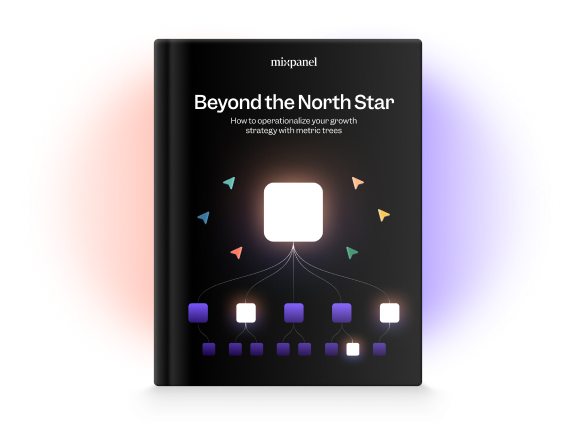Precision tracking vs. autocapture: Ending the either-or analytics dilemma
For years, data teams have been trapped in an unenviable position when evaluating analytics tools: Choose between speed or specificity, but never both.
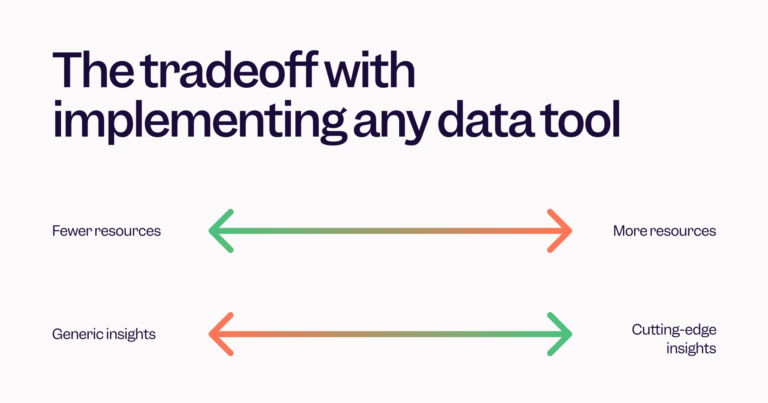
On one end of the spectrum is precision tracking: a deliberate, developer-led approach where each user action is explicitly defined in code. It yields high-quality data, supports robust analysis, and ensures every tracked event aligns with your product's core behaviors. But there’s a cost to having high-fidelity data. It calls for intentional planning, can take weeks of engineering time to implement (30 minutes per tracked event is the rule of thumb), and just as long to maintain as products inevitably evolve.
On the other end is autotracking (more often called autocapture): a seemingly magical solution where analytics tools automatically collect data on user actions—clicks, form submissions, page views, and more. It’s fast and easy to deploy, offering immediate access to usage data with minimal engineering lift. But it sacrifices precision. Events are generic in definition and enriched with the same set of generic, pre-defined properties for every digital product, meaning important business context can get lost. The result? Confusing or incomplete metrics, shallow segmentation, and a growing mistrust in the data.
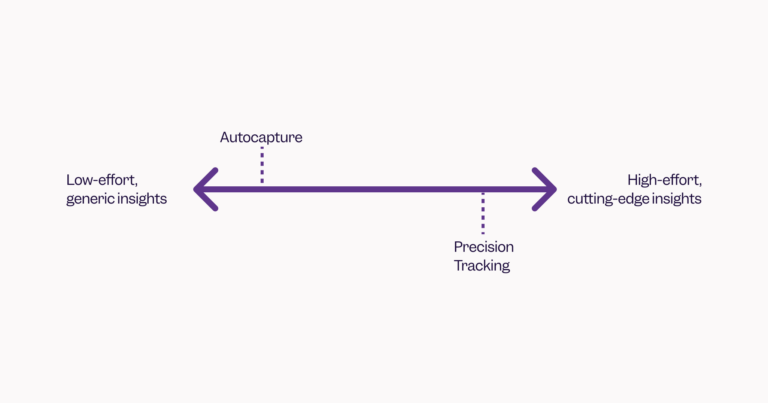
This is the fundamental analytics tradeoff of speed versus depth, quick setup versus long-term reliability. And when teams pick the wrong option, the consequences ripple across the business.
Implement too much precision tracking up front, and your launch timeline slows to a crawl. Wait too long to move away from autocapture, and you risk scaling decisions on unreliable data.
As a result, many companies get stuck. They delay implementation, struggle to align teams, and spend months planning a perfect schema that never gets deployed—this is the number one reason many analytics projects fail. Or worse, they implement something quickly only to realize months later that it doesn’t answer the questions that matter.
That’s why we believe it’s time to rethink this tradeoff.
Pros and cons: What to know before you decide
Let’s start by clarifying what each method really is.
Precision tracking
Precision tracking means your team defines the events that matter most up front and then implements them explicitly in code using an SDK. This gives you:
- Custom event names aligned with product and business logic
- Structured properties (e.g., plan type, customer tier, referral code)
- Clean, trustworthy datasets for cohorting, funnels, and retention
- Cross-platform consistency (especially important for web & mobile apps)
This approach is ideal when your questions are clear and specific:
- How many users completed onboarding after being shown a certain tutorial?
- What percentage of first-time buyers used a promo code?
- How does behavior differ across subscription tiers?
With precision tracking, your data model reflects your business model. And for companies like Uber and Netflix—where segmentation, compliance, and cross-platform consistency are critical—that level of control is non-negotiable.
Autocapture
Autocapture is much faster to deploy. Add one snippet of code, and you’ll immediately start collecting behavioral data—page views, button clicks, form submissions, and more — along with contextual properties like text labels, DOM elements, and URLs.
The upside?
- Speed: Implementation takes minutes, not weeks
- Coverage: You start collecting insights on everything, instantly
- Accessibility: Non-technical users can explore data without waiting on engineers
You can use the events captured with autocapture tools to:
- Track unique vs. new users by page
- See which elements get clicked most frequently
- Build click-based funnels for exploratory analysis
But autocapture has real limitations when it comes to analysis:
- You can’t segment by key business attributes (like account type or user status) unless those are explicitly defined
- Event definitions can be messy and inconsistent over time
- Sensitive data might be captured unintentionally, creating governance risks
Both methods have clear strengths—and just as clearly, tradeoffs. To help you evaluate what’s right for your team, here’s a side-by-side breakdown of how precision tracking and autocapture compare across key criteria:
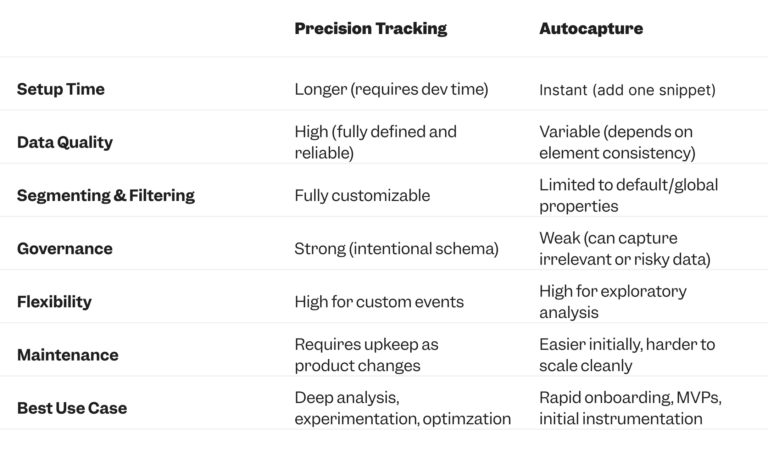
As your team matures, the need for cleaner segmentation, consistent properties, and analytical depth often becomes unavoidable. That’s why many teams who start with autocapture eventually migrate toward precision tracking — without abandoning the speed that got them started.
At Mixpanel, we’ve historically been known as a precision tracking tool. And while that’s great for high-fidelity analysis, it created a barrier for teams who just wanted to get started quickly.
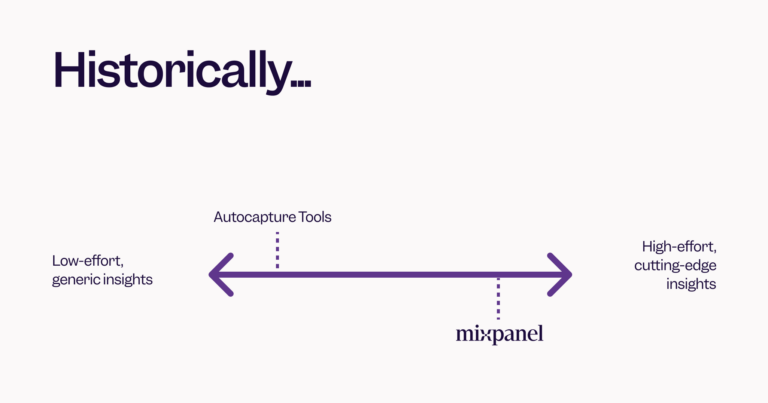
But we listened. We saw that most teams didn’t want to choose between the two extremes.
They wanted to:
- Start quickly with minimal friction
- Explore early patterns in product usage
- Scale toward a structured tracking plan over time
So we built Mixpanel Autocapture, a new way to get up and running in Mixpanel in minutes, without sacrificing the ability to evolve toward precision.
This means you can:
- Use Autocapture to explore behavioral data fast
- Define custom events based on real user interactions
- Supplement your analysis with precision tracking as needs evolve
And because Mixpanel supports both approaches out of the box, there’s no need to rip and replace tools as you grow.
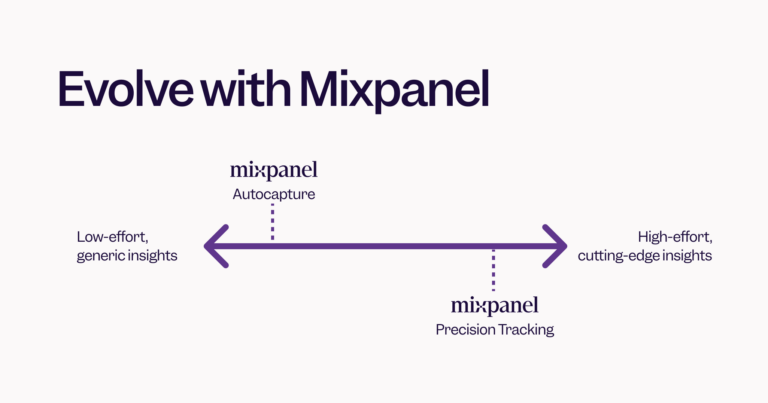
Choosing the right starting point
We recommend evaluating tracking strategy across four key lenses:
1. Technical maturity
- If you have limited engineering resources or need to move fast, start with Autocapture.
- If you have a dedicated data team or compliance requirements, precision tracking is likely the better fit.
2. Business goals
- Need directional insights fast? Autocapture gets you there in ten minutes.
- Need to segment by customer attributes, plan types, or funnel stages? Go precision.
3. Product stage
- For early-stage or fast-changing products, Autocapture can help identify what’s worth tracking deeply.
- For mature products, invest in structure and governance through precision tracking.
4. Analysis needs
- If your key stakeholders rely on reporting, segmentation, or forecasting, precision tracking is a must.
- If you’re still exploring the behaviors that matter, start broad with Autocapture.
Evolve toward full fidelity with data warehouse syncs
It’s also worth noting that for companies with sophisticated data stacks, data warehouse integrations represent the final stop on the spectrum of analytics maturity.
Cloud data warehouses like Snowflake, Databricks, BigQuery, and Redshift act as many organizations’ sources of truth, syncing modeled data with downstream destinations for the highest degree of fidelity, governance, and cross-system consistency. But they also require the most investment. Mixpanel supports this, too. Whether you’re just getting started or already scaling with a modern data stack, we meet you where you are so every team—from product to marketing to engineering—can make confident decisions quickly without compromising on data trust.

